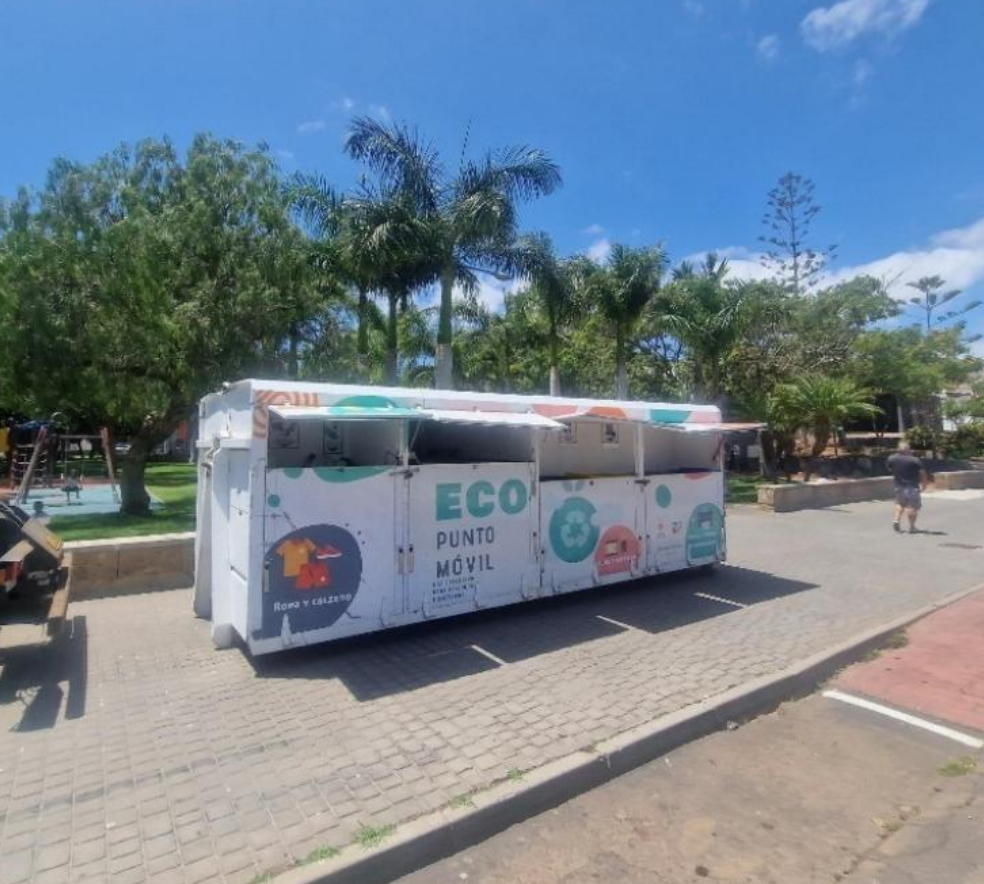Works are being carried out in coordination with the Tuineje City Council and the Insular Water Council
The Cabildo de Fuerteventura has started the works to recover the Los Sorribos pond in Tesejerague. The insular president, Lola García, explains that «the works improve a small pre-existing reservoir that has lost its usefulness due to deterioration, in collaboration with the Tuineje City Council and the Insular Water Council of Fuerteventura».
The Works and Machinery councilor, Blas Acosta, explains that «the traditional drainage systems we are recovering protect infrastructure, urban areas, and scattered settlements from floods», as well as being very valuable for «conserving rainwater and helping to replenish the island’s aquifers».
The Works and Machinery technicians have started to clear weeds, trash, and sediments accumulated by the runoff from the pond basin to restore its original capacity. They will continue with improvements to the earth slopes to strengthen them, as well as to enable an effective drainage system that ensures controlled water circulation in case the pond’s capacity is exceeded.
The Los Sorribos pond, located in Tesejerague, is part of the traditional drainage systems network of the Tuineje municipality. «Fuerteventura has a wide experience in ways to harness rainwater that dates back in our history, and that tradition born out of necessity is what we have used to rehabilitate these drainage systems and adapt them to current needs, such as protecting urbanized areas and public infrastructure,» adds Blas Acosta.
For the Water councilor, Adargoma Hernández, «it is important to work on optimizing the different systems distributed throughout the island, recovering reservoir capacity, both for rainwater collection and aquifer recharge».
These traditional hydraulic works have been recovered following the original dry earth construction techniques and using local materials, so their visual impact is minimal and their integration into the landscape is virtually complete.
The network of traditional drainage systems in Tuineje
Tuineje currently has several drainage systems based on traditional hydraulic works. Together, they form a network of traditional drainage systems with 9 infrastructures in different channels, including ponds and ‘desarenadores’, being the Los Sorribos pond, in the process of recovery, the tenth piece of the already active network. It is a network formed by ‘desarenadores’ 1 and 2 in the Tarajalejo valley, the Rosa de los James pond, the El Cardón 1 and 2 ponds and the ‘desarenador’ of El Cardón, the Diego Alonso pond, and the Los Adejes 1 and 2 ponds.
The ‘desarenador’ of the Tarajalejo valley has a capacity of 25,000 cubic meters of containment (plus another private ‘desarenador’ of smaller dimensions located upstream).
An example of larger dimensions is the Rosa de los James pond. With a capacity for over 100,000 cubic meters of water, it extends over about 30,000 square meters. The intervention of the Works and Machinery Service and the CIAF has improved its slopes upstream and downstream, thus acquiring greater stability of the structure. The works also included the construction of a new spillway that has been protected by a stone revetment. It protects urbanized areas of the Tarajelejo valley from floods.
The El Cardón drainage system, consisting of two ponds at the headwaters of two ravines (one with a capacity for 8,000 cubic meters and another with space to collect 16,000 cubic meters of water) that drain into the Montaña Hendida ravine. This ravine continues downstream and connects with the Bácher ravine, where the third piece of the system is located, a ‘desarenador’ with a capacity of 12,000 cubic meters of water. It protects scattered homes in these ravines from floods.
The Diego Alonso pond, privately owned, has a capacity of about 15,000 cubic meters of water. The Works and Machinery Service and the CIAF have reinforced its structure, cleaned the sediment from the bottom, and improved its spillway. It is worth mentioning in this case that the excess materials were used to fix gavias downstream, multiplying the rainwater retention capacity in that channel and the aquifer recharge.
The network also includes the Los Adejes drainage system. Its two ponds are located in the same basin at different levels. This strategic arrangement, plus the provision of spillways, allows the excess water in pond 1 to gravitate to pond 2, thus doubling the use of rainwater. Los Adejes 1 and Los Adejes 2 have a combined capacity of 30,000 cubic meters of water. This drainage system constitutes a safety element against sudden floods for inhabited areas downstream. Places like Tirba, Violante, Diego Alonso, and Piedra Hincada.





